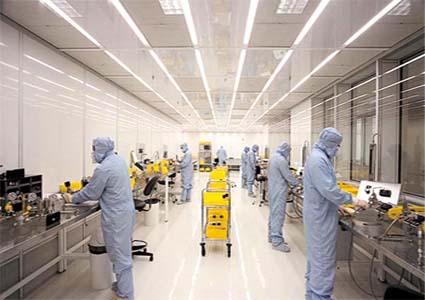Home > Industry news
A cleanroom is a working environment where concentration of airborne particles and contamination is controlled to maintain the specified limits. A cleanroom working environment is required at manufacturing units of semiconductors, pharmaceuticals, manufacturing centers, testing facilities and other critical environments where little contamination can be harmful.
Any contamination in a cleanroom generated by movement of people, manufacturing or research process andequipments should be removed or controlled up to the required standards. The Federal Standard 209E is widely followed cleanroom standard and guideline.
Sources of Contamination in a Cleanroom
Here is a partial list of some of the commonly known contaminants in a cleanroom environment:
Cleanroom
Dangers of Contaminants in a Cleanroom
Most contaminants in a cleanroom environment is invisible to naked eyes. They can be as tiny as 0.3 microns. Despite the tiny size, these contaminants can cause serious damage in sensitive and critical manufacturing units and research centers. Any material, substance, particle, chemical, or other undesirable substance can taint, pollute, defile, make impure or unclean, or adversely effect the process or product. Contamination can take many forms such as: particulate, chemicals (including gases), electro-static discharge, viables ( bacteria, molds, etc..), and other forms.
How to Control Contaminants in a Cleanroom
Contamination control in a cleanroom needs proper planning and execution of these plans.
Cleaning Procedures for Cleanrooms
Cleaning procedures in a cleanroom depends on the class of the unit. Most commonly sterile cleaning solutions, sticky mats, swabs, wipers and special mops are used for the job.
QISMT Electronic Co.,ltd provide a full SMT assembly line solutions, including SMT Reflow Oven, Wave Soldering Machine, Pick and Place Machine, Insert Plug-in machine, SMT Stencil Printer, SMT AOI SPI Machine, SMT Peripheral Equipment, SMT Production line, SMT Spare Parts etc any kind SMT machines you may need, please contact us for more information: wechat whatsapp:+8617748683433, Skype: qismteric, Email:sales@qismt.com
Contact: Andy
Phone: +86 17748683433
Tel: +86 755 85225569
Email: sales@qismt.com
Add: 94# guangtian Road Songgang BaoAn district shenzhen China